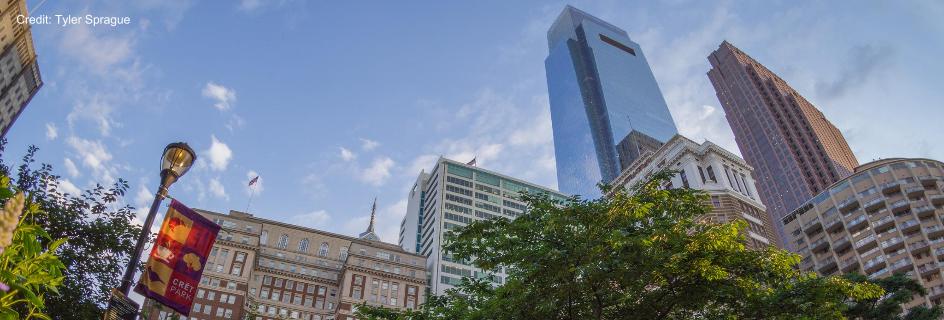- About GPA
- Global Events
- GLOBAL NEWS FROM PHL
- Global Directory
- World Heritage City
- Sustainable Development Goals (SDGs)
- Global Philadelphia Role on Sustainable Development Goals
- Completed Sustainable Development Goals
- SDG#1: No Poverty
- SDG #2: Zero Hunger
- SDG#3: Good Health & Well-Being
- SDG#4: Quality Education
- SDG#5: Gender Equality
- SDG#6: Clean Water & Sanitation
- SDG#7: Affordable and Clean Energy
- SDG #8: Decent Work and Economic Growth
- SDG #9: Industry, Innovation, and Infrastructure
- SDG#10: Reduced Inequalities
- SDG#11: Sustainable Cities and Communities
- SDG#16: Peace, Justice and Strong Institutions
- SDG#17: Partnerships for the Goals
- Press
Home ›
A Reflection on the President's House in Philadelphia
Posted on February 16, 2019

When it comes to the history of our country's founding and the American Revolution, you can't go without mentioning George Washington. Washington became our nation's first president (1789 - 97) and, with the new U.S. Constitution ratified, the new republic was beginning to legitimize as a sovereign independent power.
Celebrated annually on the third Monday in February, Presidents’ Day honors our first President’s birth and, depending on which state you live in, the holiday may also recognize all of our nation's presidential leaders. Each state can choose to use the holiday to celebrate Washington alone, Washington and Abraham Lincoln (whose birthday is February 12), or some other combination of U.S. presidents.
As we know, The White House in Washington, D.C. is the official residence and workplace of the President of the United States. However, before there was the White House, President Washington resided in Philadelphia. The President's House, at 524–30 Market Street, housed George Washington from 1790 to 1797 and John Adams from 1797 to 1800.
The house was demolished in 1832 and, in late 2000, during excavation for the new Liberty Bell Center, foundations of the President's House were uncovered and revealed revealing the site of Washington's slave quarters. The Independence National Historical Park created an outdoor exhibit, "Freedom and Slavery in the Making of a New Nation," which examines the paradox between slavery and freedom in the founding of the nation. The exhibit displays the names of the nine enslaved African Americans, Moll, Christopher Sheels, Hercules, his son Richmond, Oney Judge, her brother Austin, and Giles, Paris, and Joe, who had worked at the President's House.
In a self-guided exhibit, you can see the foundation of the home still embedded in the ground.
There is also another President’s House, dubbed as the “Germantown White House,” where Washington took refuge from the deadly yellow fever epidemic in Philadelphia in 1793. The following summer, it was a welcome retreat from the heat of the capital city. It was also a meeting place for U.S. cabinet members, Thomas Jefferson (State), Alexander Hamilton (Treasury), Henry Knox (War), and Edmund Randolph (Attorney General), where they discussed the international conflict between France and Great Britain, which resulted in President Washington declaring neutrality.
In October 1777, it became the quarters of British General William Howe during the Revolutionary War, after the Battle of Germantown.
The Germantown White House is currently overseen by the National Park Service and has been restored to its 18th-century appearance.
With the current White House being completed in Washington, D.C. in November 1800, the Germantown White House and the President’s House in Philadelphia became landmarks in U.S. presidential history and have become popular tourist attractions for anyone who visits the city and the region.
For more information on both Presidents’ Houses, check out the links below:
https://www.nps.gov/inde/learn/historyculture/places-germantownwhitehouse.htm
http://www.ushistory.org/presidentshouse/index.php
Article written by Kyle Purchase on behalf of Global Philadelphia Association
Photo credit: Independence Hall Association







